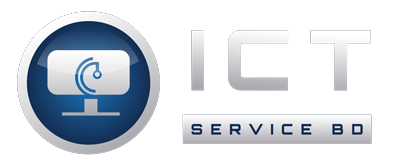A computer is a complex electronic device that can perform various tasks by executing sequences of instructions. It is a versatile tool used for processing, storing, and manipulating data and information. Computers come in various forms, including personal computers, servers, mainframes, and embedded systems. Here are key details about computers:
- Components of a Computer:
- Central Processing Unit (CPU): The CPU is the “brain” of the computer, responsible for executing instructions and performing calculations.
- Memory (RAM): Random Access Memory (RAM) provides temporary storage for data and instructions that the CPU is currently working on. It allows for fast access to information.
- Storage Devices: Computers have various storage options, including hard disk drives (HDDs), solid-state drives (SSDs), and optical drives, which store data for the long term.
- Input Devices: Input devices, such as keyboards, mice, and touchscreens, allow users to interact with the computer by providing data and commands.
- Output Devices: Output devices, including monitors, speakers, and printers, provide information to the user in a human-readable form.
- Motherboard: The motherboard is the main circuit board that connects and facilitates communication between all computer components.
- Peripheral Devices: These include external devices like external hard drives, webcams, and scanners that can be connected to the computer to extend its functionality.
- Types of Computers:
- Personal Computers (PCs): These are designed for individual use and come in various forms, including desktops, laptops, and tablets.
- Servers: Servers are designed to handle network requests, data storage, and other tasks for multiple users or clients. They often operate without a monitor or keyboard.
- Mainframes: Mainframes are large, powerful computers used by organizations for critical data processing tasks, such as banking and airline reservation systems.
- Supercomputers: Supercomputers are highly specialized and designed for extremely high-speed and complex calculations, used in fields like weather forecasting and scientific research.
- Embedded Systems: These are computers integrated into everyday devices and machines, such as appliances, vehicles, and industrial equipment.
- Operating System:
- Computers run on an operating system (OS), such as Windows, macOS, or Linux, which manages hardware resources and allows users to run applications and interact with the computer.
- Software and Applications:
- Software encompasses applications and programs that run on a computer. Examples include word processors, web browsers, games, and professional software like graphic design or programming tools.
- Computer Networking:
- Computers can be interconnected through networks, enabling data sharing, communication, and collaboration. The internet is a global network of interconnected computers.
- Programming and Coding:
- Programming languages are used to create software and applications for computers. Developers write code to instruct the computer on what tasks to perform.
- Computer Security:
- Protecting computers from viruses, malware, and unauthorized access is essential. This involves using antivirus software, firewalls, and secure passwords.
- Evolution of Computers:
- Computers have evolved significantly from large, room-filling mainframes of the mid-20th century to the compact and powerful devices we use today.
- Cloud Computing:
- Cloud computing allows users to access and store data and run applications on remote servers over the internet, providing flexibility and scalability.
- Artificial Intelligence (AI):
- AI technologies, like machine learning and neural networks, have enabled computers to perform tasks that traditionally required human intelligence, such as image recognition and natural language processing.
Computers are integral to modern life, used in diverse fields, from business and education to healthcare and entertainment. They have revolutionized how we work, communicate, and solve complex problems. The continuous advancement of computer technology contributes to the ongoing evolution of society and the way we interact with the world.
google.com, pub-8840464108896285, DIRECT, f08c47fec0942fa0 google.com, pub-8840464108896285, DIRECT, f08c47fec0942fa0